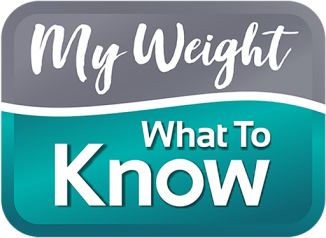By Madeleine Ortiz
Physical activity provides a wide range of health benefits for just about everyone. It is associated with improved heart health, lower cholesterol, decreased abdominal fat and a reduced risk for chronic disease. More importantly, these benefits are independent of a person’s BMI, meaning even if a person is medically classified as overweight or obese, they can still reap the many rewards of exercise.
The pros of physical activity can’t be denied, but there’s ongoing debate about how much and what kind of exercise is needed to actually be beneficial. The new Canadian Obesity Clinical Practice Guidelines spent years reviewing research in an effort to answer that question. What they discovered was that physical activity plans should be customized for the person. There is, however, important information that everyone should consider when creating their perfect exercise prescription. Follow the steps below to create your own, evidence-informed plan.
Choose a type.
Exercise is commonly categorized into two broad categories, aerobic and resistance. Aerobic exercise (or cardio) includes a variety of activities like walking, biking, dancing, jogging and more. Resistance training is exercise that improves muscular strength and endurance. It can include body weight exercises, weight lifting and exercises using resistance bands, among other activities. While both types are great, studies show that incorporating a combination of both into your routine will yield a higher decrease in fat and increase in muscle mass. The combined approach is also more likely to increase insulin sensitivity and improve overall functional movement.
Decide on duration.
Duration or volume is the amount of time you spend doing a single workout. While many assume more is better, especially when trying to lose weight, recent studies prove otherwise. When all other factors were the same, people in a study assigned to workout for half as long as a high volume group saw very similar results in terms of weight loss and waist circumference. Researchers suspect that the smaller goal actually led to more compliance and consistency, something to consider when creating your own exercise program. Longer periods of time spent exercising does, however, lead to increased cardiovascular health, so be sure to discuss appropriate duration with your healthcare provider if your goal is to reduce risk of heart disease and other cardiovascular complications.
Pick an intensity that works for you.
Intensity is how hard you are working during the exercise. Technically, it’s based on your heart rate and your VO2max ,but you can also judge it using RPE, rate of perceived exertion, or how hard you feel like you’re working during exercise. The guidelines reference studies that show that vigorous intensity will likely mean less time having to exercise to see results, but does not necessarily yield better results. Meaning, if you’re short on time, it might be worth it to try a vigorous workout. However, if you have an injury that prevents vigorous exercise or you simply don’t enjoy it, longer workouts at a moderate or low intensity are likely just as effective.
Commit to a frequency.
Frequency is the amount of times you exercise in a given period of time. In most studies, it usually refers to how many times you workout in a week. The authors of the guidelines were surprised to discover that the research showed those who exercised 3x a week generally obtained more benefits than those who did 5x a week or more. Though there isn’t much research as to why this might be the case, experts theorize that similar to duration, those that planned on less frequency stayed more committed to and consistent with their routines. Another reason is that when participating in less workouts per week, the workouts that do occur tend to be more intentional and effective. So, if you decide to commit to more than 3x a week of exercise, be sure to include easier, lower impact workouts for at least 1-2 of those times to allow your body time to recover.
When starting any new exercise program, it’s important to consult a health care professional, but it’s also important to have an honest conversation with yourself about what will fit your lifestyle. The best way to really enjoy all the benefits that come with physical activity is to pick a plan that you can stick to and that includes variety. Once you successfully make exercise part of your lifestyle, you won’t remember how you did without it!
To learn more about the benefits of exercise, click here.
To find a physician near you who specializes in weight management, click here.
Get a weekly text to help you stay on track with your health goals! Click here to sign up.
Always consult your doctor before beginning an exercise program to make sure it’s appropriate for you. Stop exercising if you experience pain, shortness of breath, dizziness, or other discomfort. The information on this website program is NOT intended, and should NOT be used, as a substitute for professional medical advice, diagnosis or treatment.
This article was sponsored by Novo Nordisk Canada. All content is created independently by My Weight – What To Know with no influence from Novo Nordisk.

